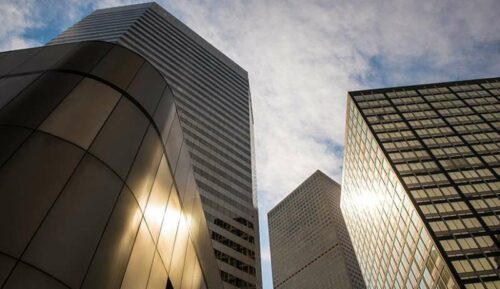Researchers have developed a way to reduce carbon emission form and improve energy efficiency in office buildings with the help of thermochromic windows.

A design or a layout is the most important part of any building. High rise building, to maintain the temperature in seasons, consumes a large amount of energy and leaves a huge carbon footprint as well. The emissions from the constant use of heating loads and cooling loads in high rise buildings needs to be managed.
According to a research effort led by the U.S. Department of Energy’s National Renewable Energy Laboratory (NREL), thermochromic windows in office buildings improves energy efficiency across all climate zones in the United States by modulating the temperature inside, leading to a massive savings. Thermochromic windows are based on the use of perovskite materials to absorb energy from the sun shift from transparent to a visibly absorbing or reflecting state.
Researchers developed a model in which they built a 12-story structure with a window-to-wall ratio of 95%. They simulated energy use in the building in 15-minute intervals for a year in eight climate zones across the country, covering Hawaii, Arizona, California, Colorado, New York, Wisconsin, Minnesota, and Alaska. They determined:
- Thermochromic double-pane windows improved building energy efficiency over double-pane windows in each zone.
- Energy savings were greater in colder regions.
- Thermochromic double-pane windows outperformed even triple-pane windows in the hottest climate zones.
Based on the results, they found that in colder climates triple-pane windows provided more energy savings than the thermochromic double-pane windows, but adding a thermochromic laminate to create a triple-pane window provided the most annual energy savings compared to the highest efficiency double-pane windows. They coupled the modeling with experimental work and demonstrated a perovskite film sandwiched between two layers of glass. The thermochromic switching was proved durable for 200 cycles. This technology mitigates heating loads in warm climates and cooling loads in colder regions.
Reference : Bryan A. Rosales et al, Thermochromic Halide Perovksite Windows with Ideal Transition Temperatures, Advanced Energy Materials (2023). DOI: 10.1002/aenm.202203331






